Huskies typically lose their puppy coat around 4-6 months of age, so regular grooming during this time is important.
| Age when huskies start losing their puppy coat | 4 to 6 months |
| Process of losing puppy coat | Blowing coat |
| Frequency of coat blowing | Twice a year |
| Duration of coat change | Up to three weeks |
| Adult coat development | By 12 to 18 months |
| Importance of grooming | High during this period |
| Impact of climate | Can influence shedding intensity |
| Recommended grooming tool | Undercoat rake |
The husky puppy coat is characterized by its soft, dense undercoat and a coarser outer layer, serving as a natural insulation against extreme temperatures. This combination of fur helps regulate the puppy’s body temperature, keeping them warm in the cold and cool in the heat.
As the puppy grows, the undercoat becomes thicker to adapt to the environment, and the outer layer starts to develop its protective qualities. Understanding these features provides insight into the pup’s unique requirements during their early stages of life.
When do huskies lose their puppy coat
It’s important to note that the husky puppy coat serves as a safeguard against harsh weather conditions, making it crucial to consider proper shelter and climate-appropriate care during this phase. This initial understanding of the puppy’s coat will set the foundation for recognizing the changes that occur during their development into adulthood.
To delve even deeper into the intricacies of husky life stages, uncover the fascinating aspects of their reproduction and litter sizes. Expand your knowledge on the subject by exploring our detailed article on the average number of offspring huskies produce.
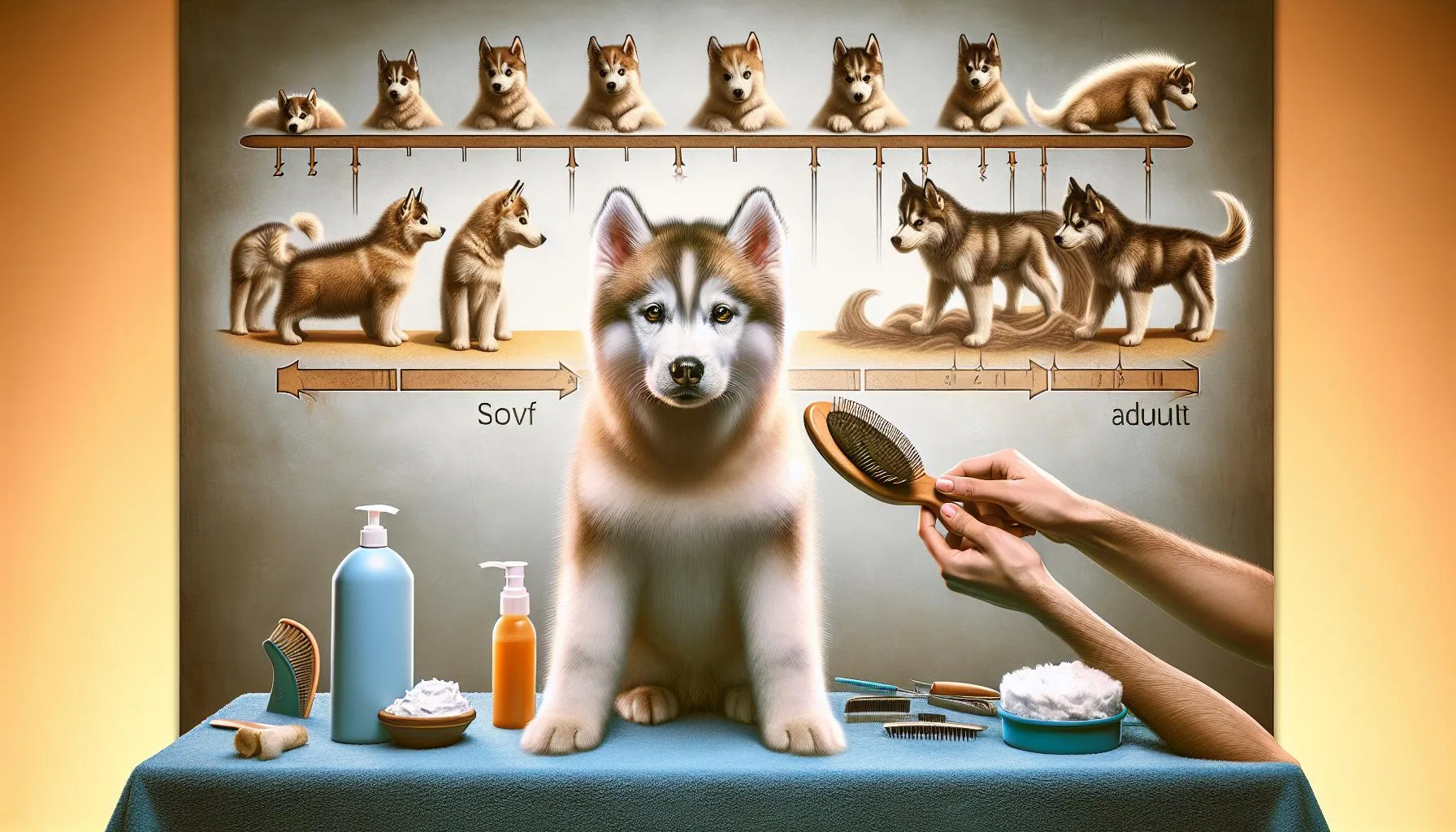
The Timeline: When Huskies Shed Their Puppy Coat
When do huskies lose their puppy coat
At around 4-6 months of age, huskies usually begin to shed their puppy coat, signifying the start of their transition to an adult coat. This shedding period is a natural part of their development as they grow and their fur undergoes changes.
The timing of this transition can vary slightly among individual huskies, but it commonly occurs within this age range. During this phase, pet owners may notice a shift in the texture and density of their husky’s coat as the puppy fluff is gradually replaced by the coarser adult fur.
Adjusting grooming routines to accommodate this change can help in managing the process effectively. Regular brushing and appropriate grooming tools can aid in managing the shedding and ensuring that the husky remains comfortable throughout this transition period..
As your husky undergoes this significant change, their communication may also begin to evolve. Discover the fascinating milestones in a husky's vocal development by reading our detailed article on the timeline of a husky's speech progression.
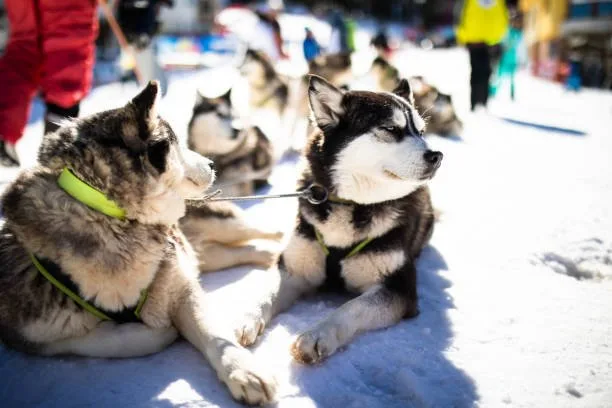
Recognizing the Signs of Coat Transition
When do huskies lose their puppy coat? As your husky undergoes the transition from puppy coat to adult fur, it’s essential to recognize the signs that indicate this change. One of the most noticeable signs is an increase in shedding.
You may observe more loose fur on your husky and around your living spaces. Additionally, keep an eye out for changes in coat texture.
The puppy coat tends to be softer and fluffier, while the adult coat is denser and more coarse. You might also notice variations in color or patterns as the puppy coat sheds and makes way for the new adult coat.
When do huskies lose their puppy coat
Another sign of the coat transition is the shedding pattern.
The undercoat often sheds first, followed by the longer guard hairs. This shedding pattern can give you a clear indication of the transition stage your husky is in.
As the undercoat sheds, you may notice an increase in brushing requirements, and the guard hairs will become more prominent as the adult coat emerges.
- Increased shedding
- Changes in coat texture
- Variations in color or patterns
.
To explore more about the unique aspects of Huskies, including the surprising reasons behind breed restrictions, delve into our in-depth article, "The Complexities of Husky Ownership: Unraveling Breed Restrictions". This resource offers a comprehensive examination of the challenges and considerations for prospective Husky owners.
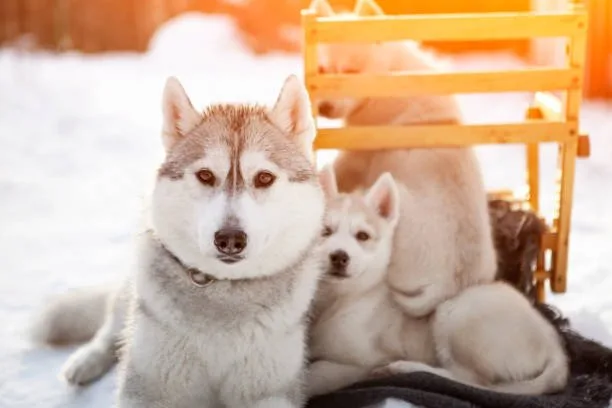
Grooming During the Transition Phase
As huskies lose their puppy coat, it’s essential to establish a grooming routine that supports the transition to their new adult coat. Regular brushing is key during this phase to manage shedding and remove loose fur.
Using a high-quality deshedding tool can help control the amount of loose hair, preventing it from spreading around the home. Additionally, introducing a grooming schedule can aid in maintaining the cleanliness and health of the new coat.
During the transition phase, it’s crucial to pay attention to the undercoat which often requires extra care.
Grooming the undercoat not only assists in managing shedding but also promotes healthy skin and fur growth. Furthermore, gentle bathing with a mild dog shampoo can help in removing loose hair and dirt, contributing to a healthier coat.
It’s important to introduce your husky to grooming practices early on to make the process more comfortable for them.
Positive reinforcement during grooming sessions can help your husky associate the experience with positivity, easing any potential stress. Lastly, keeping their nails trimmed and ears clean are also integral parts of overall grooming during the transition phase.
To explore the enchanting world of Corgi Husky mixes and discover trusted sources for adoption or purchase, continue your journey with our comprehensive guide, The Ultimate Resource for Owning a Corgi Husky Mix. Your adventure into the joys of pet ownership starts now.
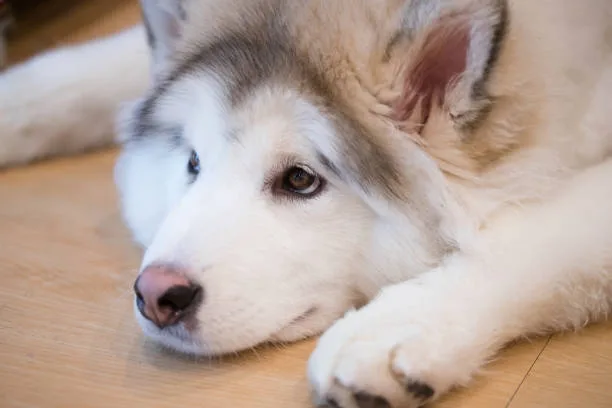
Nutrition and Its Role in Coat Health
Proper nutrition plays a crucial role in maintaining a husky’s coat health during the transition from a puppy coat to an adult coat. A balanced diet rich in essential nutrients such as protein, omega-3 fatty acids, and vitamins directly impacts the quality and sheen of the husky’s fur.
When do huskies lose their puppy coat, it is essential to ensure that their diet supports the development of a healthy adult coat. Adequate protein intake supports the growth of a strong and lustrous coat, while omega-3 fatty acids contribute to skin health, reducing dryness and itchiness that can affect the coat.
Additionally, vitamins like A and E promote overall skin and coat wellness, aiding in the transition process. Providing high-quality, well-balanced dog food specifically formulated for the nutritional needs of huskies can significantly ease the shift from puppy to adult fur.
Furthermore, it’s important to consider the impact of hydration on coat health. A properly hydrated husky will exhibit a healthy, glossy coat, as water intake directly affects skin and fur moisture.
When huskies lose their puppy coat, keeping them well-hydrated supports the development of a vibrant adult coat. Overall, paying close attention to the nutritional content of their diet and ensuring adequate hydration are vital components in promoting the health and transition of a husky’s coat.
For a comprehensive understanding of nutritional requirements and feeding guidelines that contribute to optimal fur health in dogs, delve into our detailed article titled "Husky Puppy Dietary Needs & Feeding Schedule." Discover the secrets to nurturing your husky pup's coat through its diet by visiting Husky Puppy Dietary Needs & Feeding Schedule.
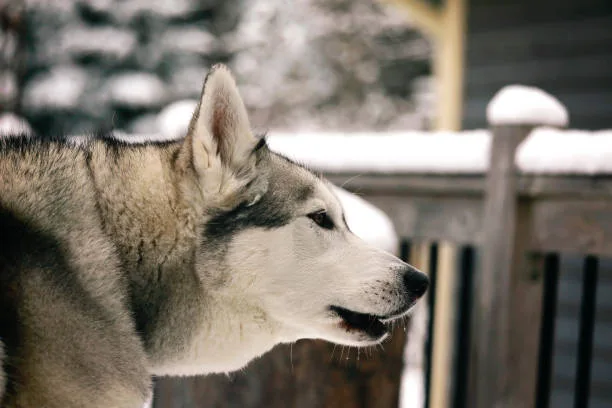
Bathing Your Husky During Coat Change
During the transition from their puppy coat to their adult coat, it’s essential to be mindful of how frequently you bathe your husky. Bathing too frequently can strip their skin and fur of natural oils, which can lead to dryness and irritation.
On the other hand, infrequent bathing can result in a buildup of dead hair and dander, contributing to that “doggy” smell. A general guideline is to bathe your husky every 6-8 weeks, but this can vary depending on their activity level and exposure to dirt and odors.
It’s crucial to use a mild, hypoallergenic shampoo specifically formulated for dogs to avoid skin irritation. After bathing, thorough drying is vital, as huskies have a dense double coat that can retain moisture close to the skin, potentially leading to skin issues if not dried properly.
Using a high-velocity pet dryer or a well-absorbing towel to dry your husky thoroughly, especially in the dense undercoat areas, can help to maintain coat and skin health during this transitional phase.
Remember that maintaining a regular grooming routine, including brushing and de-shedding, can reduce the frequency of bathing needed during the coat change, keeping your husky’s coat clean and healthy.
Managing your husky's hygiene is crucial during their shedding period, but maintaining their diet is equally important for their overall health. Discover comprehensive feeding guidelines tailored for huskies at Planet Husky's Feeding Guide.
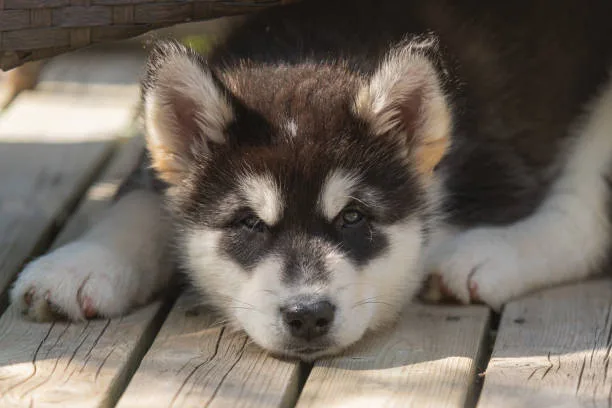
Dealing with Excessive Shedding
As huskies transition from their puppy coat to their adult coat, heavy shedding can occur, leaving pet owners with the challenge of managing excessive fur. Regular grooming is crucial during this time to help reduce shedding and keep your home clean.
To manage heavy shedding, consider brushing your husky regularly with a high-quality de-shedding tool to remove loose fur and minimize the amount of hair around your living space. Additionally, maintaining a consistent grooming routine and ensuring that your husky’s diet is rich in essential nutrients can also contribute to reducing excessive shedding.
Keeping your home clean and fur-free involves vacuuming frequently, using lint rollers on furniture, and washing your pet’s bedding and other items regularly. By implementing these strategies, you can effectively manage heavy shedding and create a more comfortable living environment for both you and your husky.
Overall, maintaining a regular grooming routine, using appropriate de-shedding tools, and ensuring proper nutrition for your husky are key to managing heavy shedding and keeping your home free of excess fur.
Discover more about the enduring companionship of these magnificent animals by exploring their lifespan in our detailed feature, "The Lifespan of Huskies." Gain insights into how the care you provide during their shedding periods can contribute to a healthy, happy life for your husky.
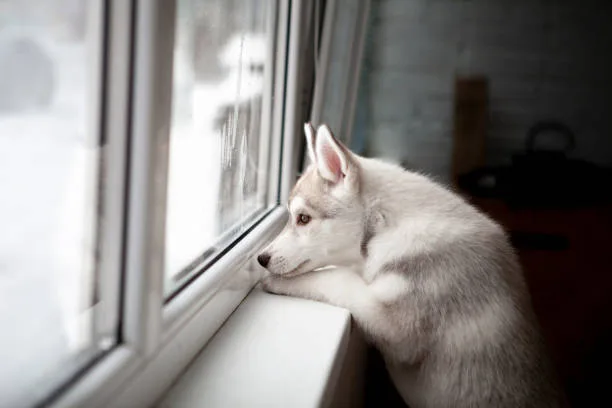
Common Health Issues Affecting Husky Coats
Huskies are generally a robust breed, but they can experience common health issues that affect the condition of their coat during the transition from puppy to adult. Skin conditions such as allergies, parasites, and fungal infections can lead to coat problems.
Allergies may cause itching, leading to excessive scratching and potential hair loss. Parasites like fleas and mites can also disrupt the coat.
Additionally, fungal infections such as ringworm can manifest as patchy hair loss and skin irritation. It’s important to promptly address these issues to prevent them from worsening and affecting the overall health of the husky.
Regular vet check-ups, a balanced diet, and appropriate parasite prevention can help maintain the health and quality of the husky’s coat during the transition period.
American Kennel Club: When do huskies lose their puppy coat
It’s crucial to regularly check the husky’s coat and skin for any abnormalities and seek veterinary advice if any concerning issues arise. Providing a nutritious diet and ensuring the husky’s environment is clean and free from potential irritants can also contribute to overall coat health during this transitional phase.
For a deeper understanding of the robust abilities inherent to the Siberian Husky breed, including their impressive strength and endurance, explore our detailed article, "Exploring the Pulling Power of Siberian Huskies." Ensure your husky's coat remains as strong and resilient as their pulling capability by reading the comprehensive guide on maintaining their well-being during seasonal transitions. Exploring the Pulling Power of Siberian Huskies.
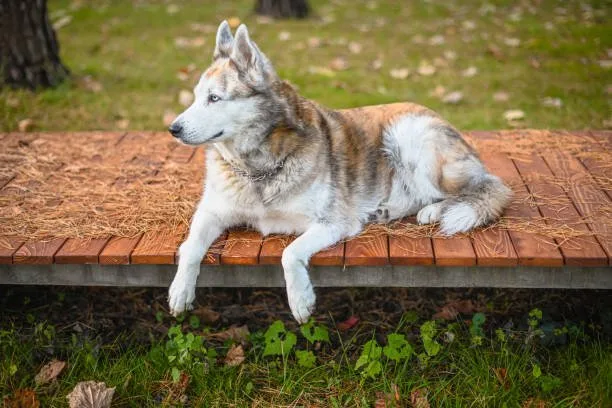
When to Consult a Veterinarian
During the transition phase from puppy to adult coat, it’s crucial to be attentive to any signs that may indicate underlying health issues in your husky. If you notice persistent skin problems, such as redness, irritation, or unusual lumps, it’s essential to consult a veterinarian promptly.
Similarly, if your husky exhibits abnormal shedding patterns, such as excessive hair loss in localized areas or the development of bald patches, seeking professional veterinary advice is highly recommended. Additionally, if you observe any changes in your husky’s behavior, including increased scratching, discomfort, or signs of pain, it’s important to schedule a vet visit to address these potential health concerns.
Being proactive and seeking veterinary guidance when you notice concerning symptoms can ensure the well-being of your husky during the coat changing process. Remember, timely veterinary intervention can help address any underlying health issues and contribute to maintaining a healthy and comfortable coat for your husky.
Reddit When do huskies lose their puppy coat
It’s essential to be attentive to signs of skin problems or abnormal shedding during your husky’s coat changing process.
For detailed insights on maintaining your husky's health during their coat shedding, explore our comprehensive article on husky endurance and care. Delve into the depths of your husky's capabilities and learn more at Husky Running Endurance and Care Guidelines.
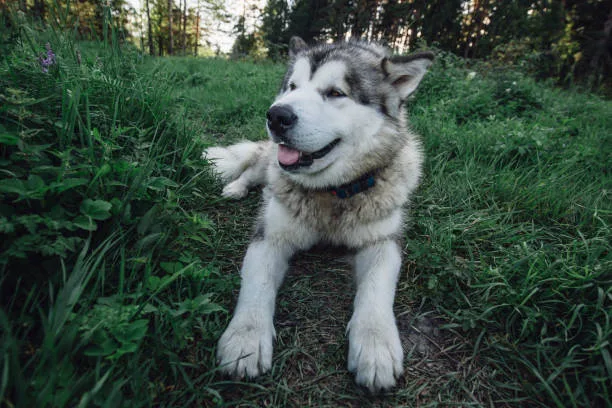
Husky Puppy Development and Shedding Cycles
On Quora about: When do huskies lose their puppy coat
Huskies undergo remarkable development stages as puppies, including shedding cycles that are essential to their growth. Shedding occurs approximately twice a year, typically in the spring and fall, as part of their natural development.
During these shedding periods, huskies go through the undercoat and blow coat phases, where their thick undercoat is shed to accommodate for seasonal changes in temperature. The undercoat plays a vital role in insulating the husky’s body, keeping them warm in winter and cool in summer.
Understanding these shedding cycles is crucial in caring for husky puppies, as it allows owners to anticipate and manage their coat changes effectively.
To delve deeper into the intricacies of pet care, especially when it comes to creating an ideal habitat for a different kind of companion, consider exploring our comprehensive guide on constructing the perfect home for bearded dragons. Embark on a journey to ensure your scaly friend's health and happiness by visiting Bearded Dragon Enclosure: Build the Perfect Home Now.
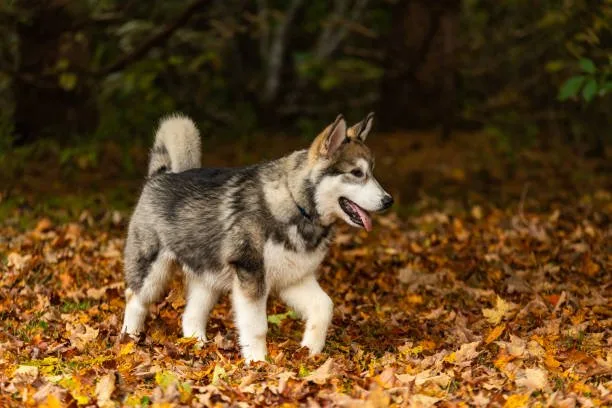
Essential Grooming Tips for Huskies
Huskies are known for their thick double coats, which require regular grooming to keep them healthy and attractive. When do huskies lose their puppy coat happens at around 4-6 months of age, marking the beginning of the transition phase.
During this period, it’s crucial to establish a consistent grooming routine to manage shedding effectively and maintain the health of the husky’s coat.
Effective brushing methods play a vital role in managing the shedding of a husky’s coat.
Regular brushing not only helps to remove loose fur and prevent matting but also stimulates the skin and distributes natural oils, which contributes to a healthy coat.
- The selection of appropriate deshedding tools is also essential in maintaining a husky’s coat. Deshedding combs and slicker brushes designed for double-coated breeds can effectively remove loose undercoat hair and help minimize shedding around the home.
- Furthermore, regular grooming not only contributes to the physical well-being of the husky but also provides an excellent opportunity for bonding between the owner and the pet.
It allows for early detection of any skin issues or abnormalities and helps to keep the coat clean and free from debris.
By incorporating these essential grooming tips into a regular care routine, husky owners can help their pets transition smoothly from their puppy coat to a healthy and lustrous adult coat. Consistent grooming not only benefits the husky’s appearance but also plays a crucial role in overall coat health and well-being.
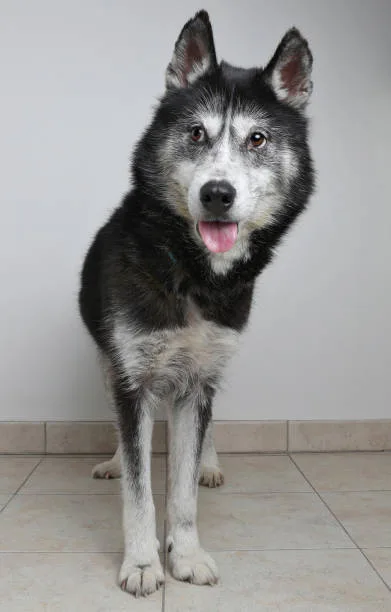
Transitioning from Puppy to Adult Husky Coat
Huskies start to lose their puppy coat at around 4-6 months of age, marking the beginning of the transition to their adult coat. This process is essential for their physiological development, as their puppy fur is gradually replaced by the thicker, coarser adult coat.
During this transition, it’s crucial to recognize the stages of husky hair growth, which includes the shedding of the soft undercoat and the emergence of the new adult fur. As the puppy coat is shed, you’ll notice variations in coat texture and density, with the adult coat being more insulating and weather-resistant.
Understanding these changes is integral to providing appropriate grooming and care for your husky during this transitional phase. Helping your husky adjust to its new adult coat will ensure its comfort and well-being as it matures..
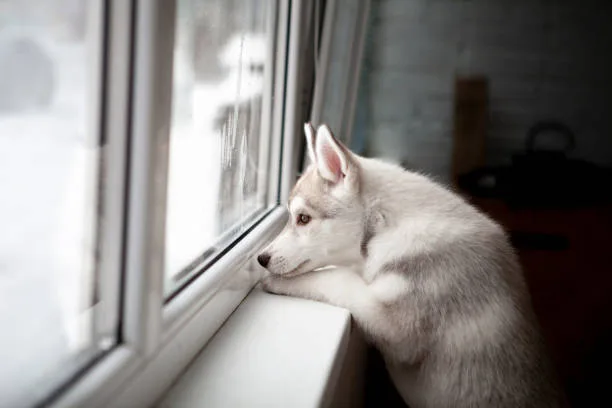
Maintaining a Husky's Coat Throughout the Seasons
Maintaining a husky’s coat throughout the seasons is crucial for reducing shedding and ensuring the dog’s overall well-being. Proper coat maintenance involves a combination of factors, including diet, health monitoring, and specific grooming practices.
- Diet: A well-balanced diet directly impacts the health of a husky’s coat.
Foods rich in omega-3 fatty acids, such as fish oil, can help maintain a healthy, shiny coat and reduce excessive shedding. Monitoring the husky’s food intake and providing high-quality, nutritious meals contributes to the strength and texture of their fur.
- Health Monitoring: Regular health check-ups are essential for detecting any underlying issues that may affect the husky’s coat.
Skin conditions, allergies, or hormonal imbalances can lead to excessive shedding or coat dullness. Keeping an eye on the husky’s overall health and seeking veterinary advice when necessary is paramount for maintaining a lustrous coat.
- Grooming Practices: Implementing specific grooming techniques, such as regular brushing with appropriate deshedding tools, can significantly reduce shedding.
Consistent grooming helps remove loose fur and prevents matting, ultimately improving the husky’s coat quality. Additionally, using specialized shampoos and conditioners suitable for husky coats can further support coat health.
By focusing on these key aspects of husky coat maintenance, owners can effectively reduce shedding throughout the various seasons and contribute to their husky’s overall well-being.
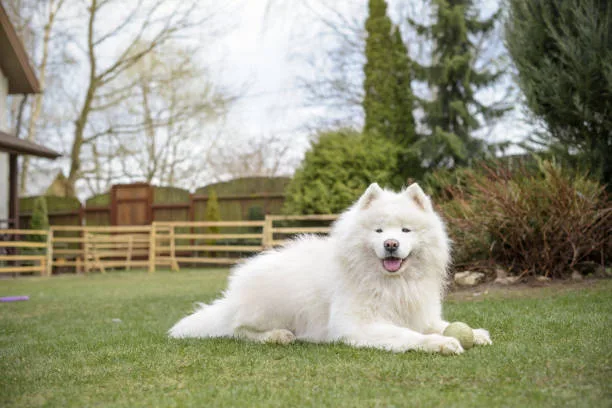
Final Tips for Maintaining a Healthy Husky Coat
After huskies have transitioned from their puppy coat to their adult coat, it’s essential to maintain their fur to keep them comfortable and healthy. Regular grooming is crucial in this stage to manage shedding and prevent matting.
Brushing the husky’s coat at least a few times a week helps to remove loose hair and distribute natural oils, keeping their fur in good condition.
Additionally, a balanced and high-quality diet plays a significant role in maintaining a healthy coat. Ensure that they receive proper nutrition rich in omega-3 and omega-6 fatty acids, which are beneficial for their skin and coat health.
It’s also important to monitor for any signs of skin issues or abnormal shedding patterns, as this could indicate an underlying health problem.
When it comes to bathing, be mindful of not overdoing it to avoid stripping the coat of its natural oils. Aim to bathe the husky only when necessary to keep their fur clean and healthy.
Proper drying after a bath is equally important to prevent any dampness that may lead to skin problems.
Finally, regular check-ups with a veterinarian are essential to ensure the husky’s overall health, including their coat condition. By following these final tips for maintaining a healthy husky coat, owners can help their furry companions stay comfortable and thriving.

Leave a Reply